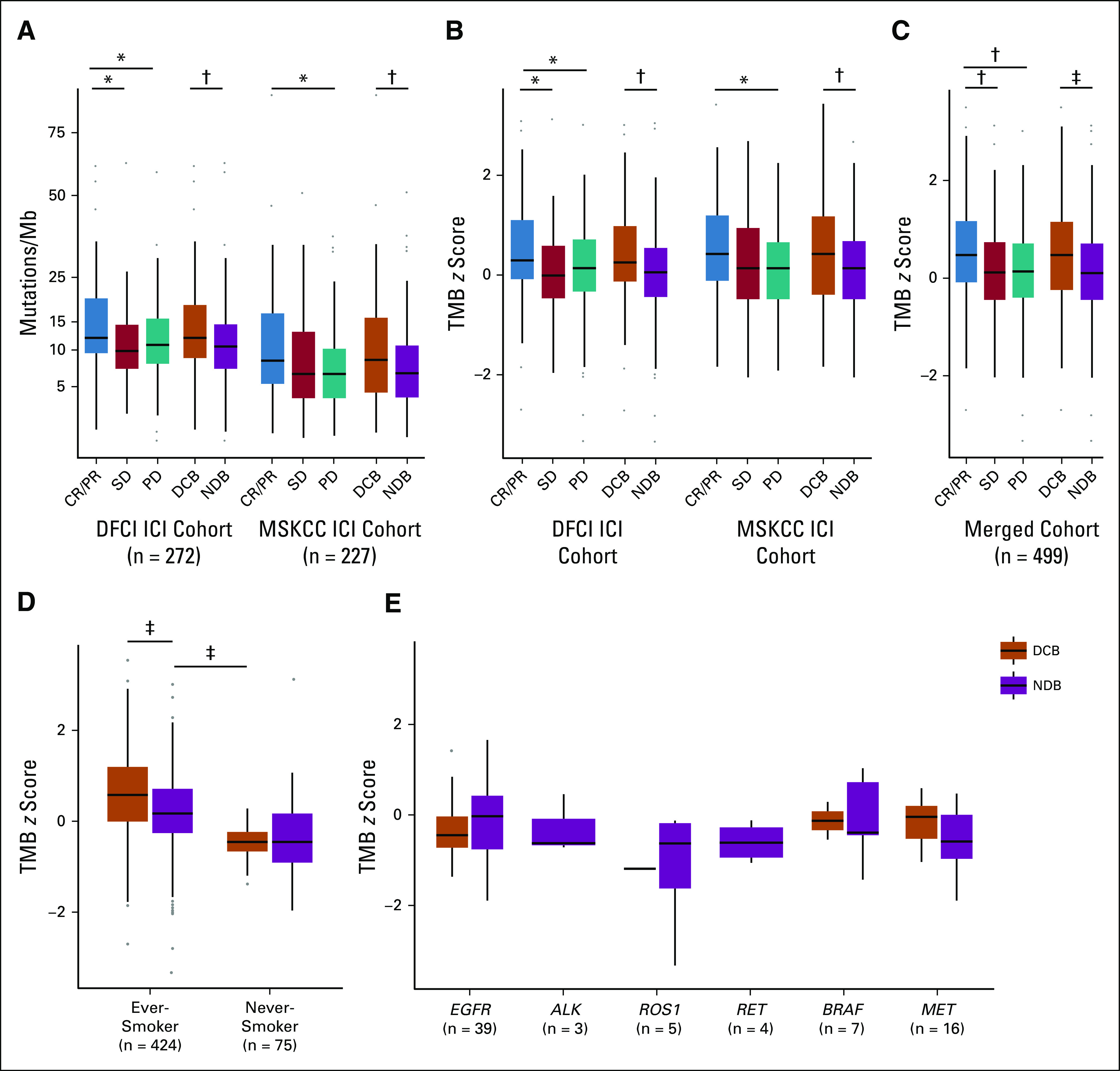FIG 2.

Correlation of tumor mutational burden (TMB) and TMB z scores with outcome. (A) In both the Dana-Farber Cancer Institute (DFCI) and Memorial Sloan Kettering Cancer Center (MSKCC) immune checkpoint inhibitor (ICI) cohorts, TMB is greater in patients with complete response (CR) or partial response (PR) than with progressive disease (PD; DFCI: median, 12.0 v 10.8 mutations/megabase [Mb]; P = .03; MSKCC: median, 8.9 v 6.9 mutations/Mb; P = .02) and in those with durable clinical benefit (DCB) v no durable benefit (NDB; DFCI: median, 12.0 v 10.5 mutations/Mb; P = .003; MSKCC: median, 8.9 v 6.9 mutations/Mb; P = .007). (B) DFCI and MSKCC TMB z score distributions overlap. The z scores are higher in patients with CR/PR v PD and DCB v NDB in each cohort, respectively (DFCI: median CR/PR v PD, 0.30 v 0.14 [P = .03]; median DCB v NDB, 0.30 v 0.10 [P = .003]; MSKCC: median CR/PR v PD, 0.46 v 0.17 [P = .02]; median DCB v NDB, 0.46 v 0.17 [P = .006]). (C) TMB z scores are higher in patients with CR/PR and DCB in the joint cohort (median CR/PR v PD, 0.47 v 0.14 [P = .002]; median CR/PR v stable disease [SD], 0.47 v 0.14 [P = .007]; median DCB v NDB, 0.46 v 0.14 [P = 6.43e-05]). (D) TMB z scores in the joint cohort are higher in ever-smokers with DCB v NDB (median, 0.579 v 0.171; P = 6.046e-05) but were not associated with response in never-smokers (median, −0.456 v −0.456; P = .749). TMB z scores were significantly higher in ever-smokers with NDB than never-smokers with DCB (median, 0.171 v −0.456; P = .00097). (E) TMB z scores in the joint cohort do not associate with response in patients with mutations in targetable oncogenic drivers. Box plots represent medians and interquartile ranges, and vertical lines extend to the 95th percentiles. (*) P < .05, (†) P < .01, (‡) P < .001.
